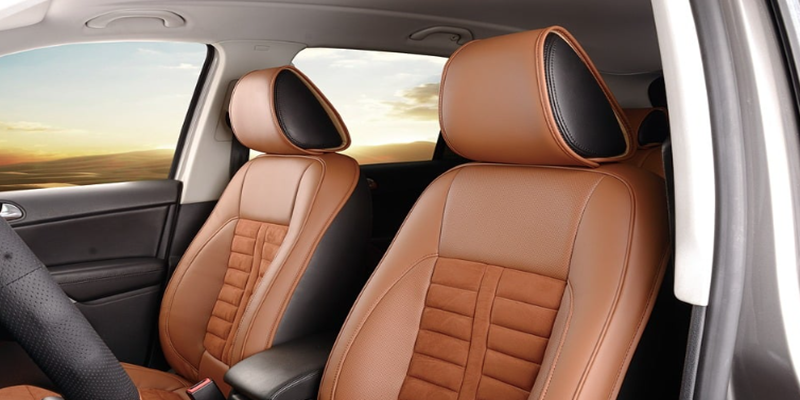Introduction
In the modern automotive industry, polyurethane (PU) soft foam has become the dominant material for car seat cushions. Its unique combination of comfort, durability, and design flexibility makes it the first choice for car manufacturers and suppliers worldwide. Compared with other cushioning materials such as latex or polyester fiber, PU soft foam offers superior performance, processability, and cost efficiency.
This article explores why polyurethane soft foam is the preferred material for automotive seat cushions, the properties that make it ideal, and how polyurethane catalysts play a key role in achieving the desired foam performance.
1. Excellent Comfort and Ergonomics
Automotive seat design requires materials that can provide both softness and support. PU soft foam can be precisely formulated to achieve different levels of hardness, resilience, and density.
- High-resilience polyurethane foam (HR foam) offers quick recovery and excellent comfort, ideal for driver and passenger seats.
- Conventional polyurethane foam provides a softer feel, suitable for armrests and back cushions.
By adjusting the formulation—particularly the balance between the polyol-isocyanate reaction and the water-isocyanate (blowing) reaction—manufacturers can fine-tune foam properties to meet ergonomic requirements.
2. Lightweight and Energy Efficient
Reducing vehicle weight is one of the main strategies for improving fuel economy and meeting emission standards. PU soft foam is lightweight yet structurally strong, providing comfort without adding unnecessary mass. A standard car seat made from polyurethane foam can be up to 30–40% lighter than traditional padding materials, directly contributing to vehicle efficiency and sustainability.
3. Durability and Long-Term Performance
Car seats experience continuous pressure, heat, and vibration over years of use. PU soft foam provides excellent fatigue resistance, maintaining its shape and cushioning properties even after thousands of compression cycles.
Thanks to optimized polyurethane catalysts, the foam exhibits a uniform cell structure and enhanced mechanical strength. Catalysts such as MXC-A1 (BDMAEE) or MXC-BDMA help control the reaction rate and balance the foaming and gelling processes, ensuring a durable foam that resists sagging and deformation.
4. Design Flexibility and Process Efficiency
PU soft foam is produced through in-mold foaming or slabstock foaming, allowing manufacturers to create seats of various shapes, densities, and firmness levels. Its versatility enables car designers to combine comfort with complex contouring and integrated structures such as seat bolsters and headrests.
In production, amine and metal catalysts play an essential role in controlling the rise time, curing time, and foam cell size. By using efficient, low-odor, and emission-free catalysts—such as MXC-37, MXC-R40, and MXC-B20—manufacturers can achieve stable processing and consistent foam quality while meeting automotive VOC and odor standards.
5. Cost-Effective and Environmentally Friendly
Polyurethane soft foam production is highly cost-efficient due to its low raw material consumption, fast curing, and compatibility with automated manufacturing systems. Moreover, with the use of low-emission catalysts and eco-friendly blowing agents (like HFO systems), modern PU soft foam formulations align with environmental regulations and sustainability goals.
Advanced catalyst systems, such as MXC-T9 and MXC-T12, provide strong gelation control and enable precise reaction kinetics, reducing scrap rates and enhancing overall yield.
6. Superior Acoustic and Thermal Insulation
In addition to comfort, PU soft foam contributes to the acoustic and thermal insulation of the vehicle interior. Its fine, uniform cell structure helps absorb noise and vibration, improving cabin quietness. The foam also provides thermal stability, enhancing passenger comfort in both hot and cold climates.
Conclusion
From comfort and durability to process efficiency and sustainability, polyurethane soft foam continues to dominate the automotive seating industry. Its customizable formulation, lightweight nature, and superior mechanical properties make it the material of choice for modern car seat cushions.
At Mingxu New Materials, we supply a full range of polyurethane catalysts designed for automotive foam applications—including MXC-A1, MXC-BDMA, MXC-B20, MXC-T12, and MXC-R40—helping manufacturers optimize foam performance, reduce odor, and improve production efficiency.
If you’re looking for reliable catalyst solutions for PU soft foam in car seat production, contact us today to discuss customized formulations that meet your performance and environmental standards.
Post time: Oct-21-2025

